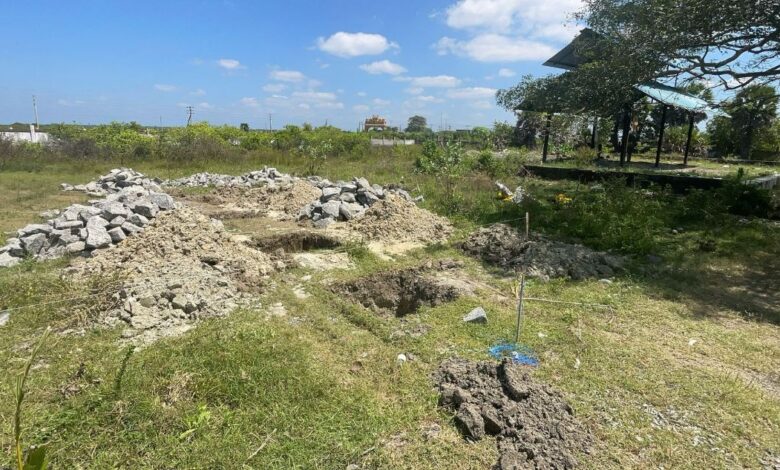
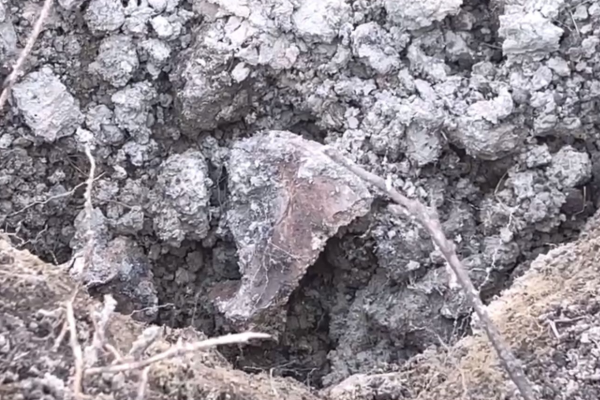
The remains were found on February 13th during construction work for an crematorium at the Ariyalai Sindhubath burial ground in the Chemmani area. Contractors carrying out the construction immediately alerted the Nallur Pradeshiya Sabha and the Cemetery Development Board, leading to the suspension of all construction work. The occupying Sri Lankan police have since been informed, and further investigations are expected.
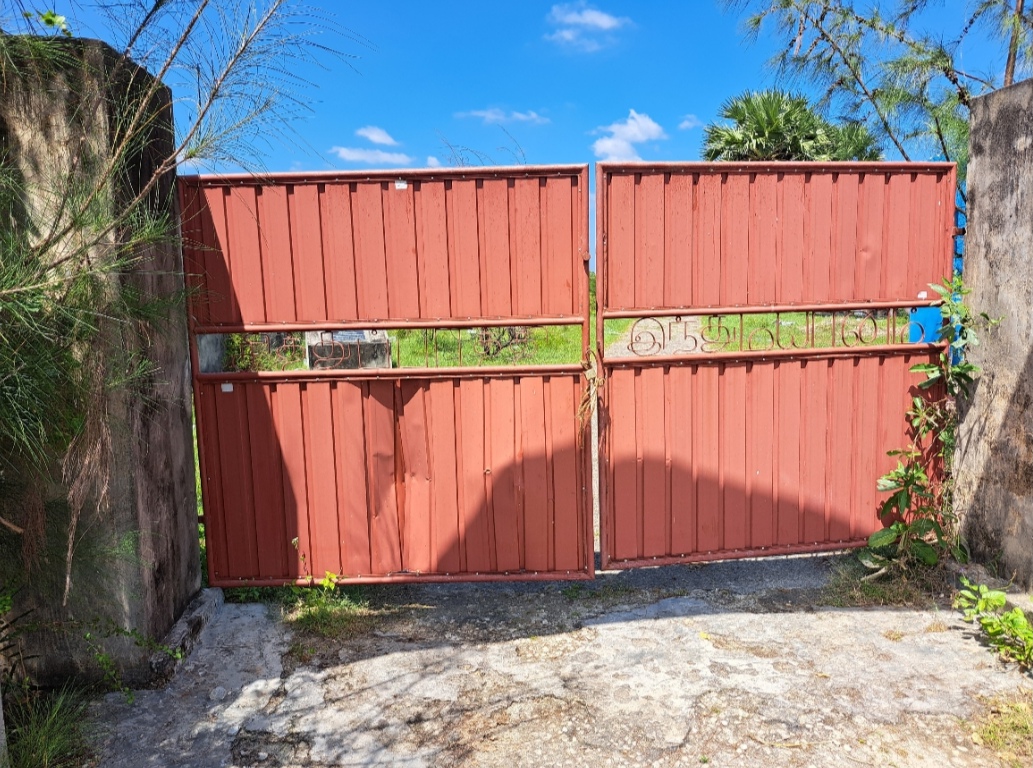
This latest discovery has reopened old wounds in a region that has long suffered from military occupation, enforced disappearances, and mass killings.
The Chemmani area became infamous following the 1996 murder of Krishanthi Kumaraswamy, an 18-year-old schoolgirl from Jaffna who was abducted, sexually assaulted, and murdered by Sri Lankan military personnel at the Kaithady army checkpoint.
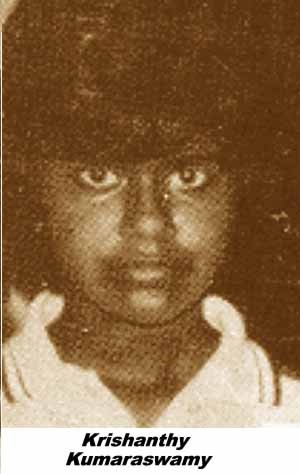
Her mother, Rajamma Kumaraswamy (59), her brother Pranavan Kumaraswamy (16), and neighbour Chidambaram Kirupamoorthy (35) were all murdered after going to the Chemmani military camp in search of her. Their bodies were discovered buried in a field in Chemmani.
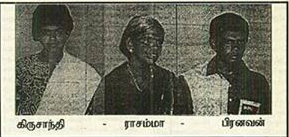
During the subsequent court proceedings, shocking details emerged of mass executions carried out by the Sri Lankan military in the region.
In July 1998, Sri Lankan Army Lance Corporal Somaratne Rajapakse, one of the soldiers convicted in the Krishanthi murder case, revealed the existence of a mass grave in Chemmani.
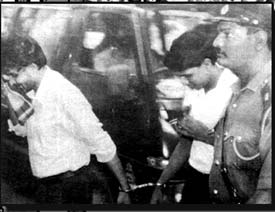
In his testimony, Rajapakse claimed between 300 to 400 innocent people were buried in Chemmani. Following this revelation, forensic excavations were carried out at Chemmani in June 1999, leading to the exhumation of multiple human skeletons. Some of the remains were blindfolded and had their hands tied behind their backs, indicating they had been executed before being buried.
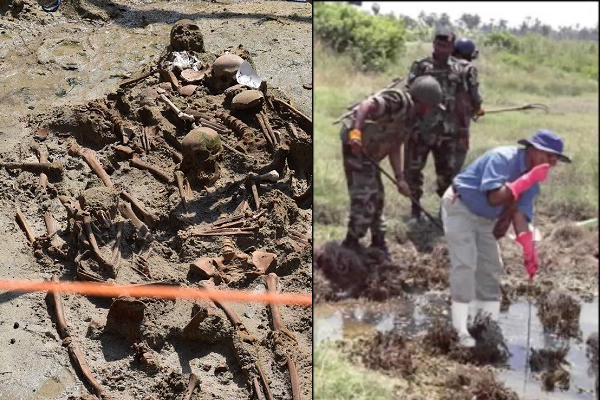
Human rights organisations, including Physicians for Human Rights (USA) were amongst the international observers witnessing the exhumations. However, despite the overwhelming evidence, justice was never fully served. The Sri Lankan Ministry of Defence opened an inquiry, but as pressure mounted internationally, the government attempted to stall the process.
The Attorney General’s Department and the Criminal Investigation Department (CID) requested DNA samples from the families of missing persons from Jaffna (1996) to help identify the bodies, but delays and bureaucratic obstacles hampered progress.
By 2000, 500 relatives of missing persons were invited to identify clothing and personal items recovered with the 15 skeletal remains exhumed. The remains were handed over to forensic scientist Professor Chandrasiri Niriella, who identified cause of death in 13 victims, with two showing no visible injuries.
By 2004, the U.S. Department of State noted that the case was still pending, with no significant progress made.
In 2007, S. T. Gananathan, a social worker who was actively involved in exposing Krishanthi’s case, was assassinated by unidentified gunmen near Mampalam Junction Sri Lanka Army camp in Ariyalai. The common perception is that he was killed in revenge for exposing the murderers of the 18-year-old Krishanthi.
UPDATE via Kumanan February 28, 2025 on Twitter –
The court heard the case regarding the remains found at Jaffna #Chemmani Sithupaththi Hindu cemetery today (28). Jaffna Teaching Hospital’s Judicial Medical Officer (JMO), Dr. Pranavan Selliah, submitted the first report to the court, confirming that over 40 bone samples were recovered, with all but two identified as human remains. He emphasized the need for a preliminary investigation to determine whether the site is a continuous Mass grave site or an individual burial site. Senior archaeologist Raj Somadeva has agreed to conduct research. The first phase will involve scanning, with a court discussion scheduled for March 4 . Excavation will proceed depending on weather conditions.
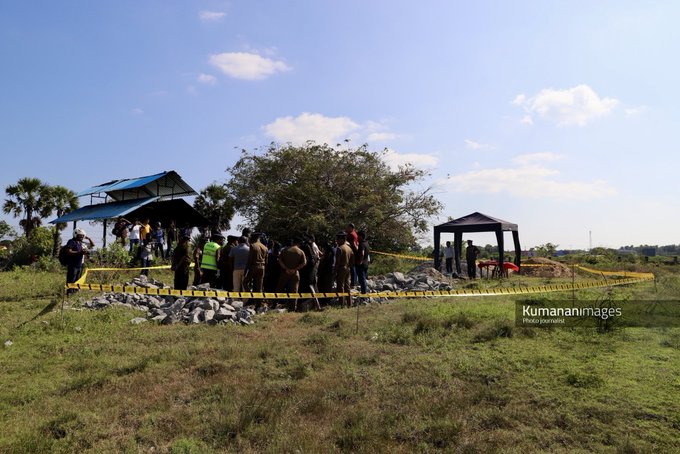
Chemmani February 28, 2025, courtesy Kumanan Images
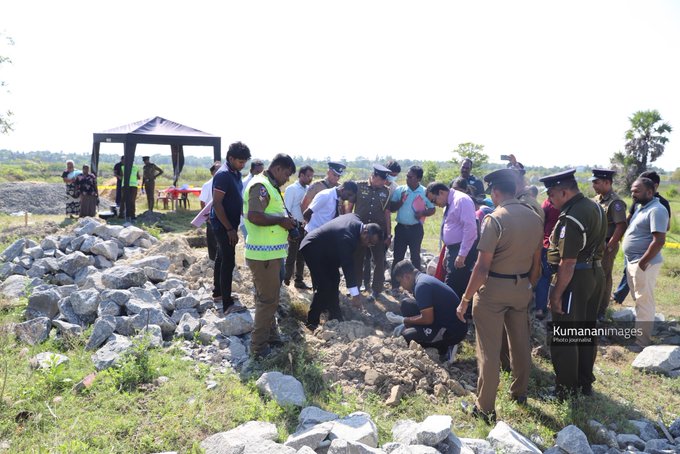
Chemmani February 28, 2025, courtesy Kumanan Images